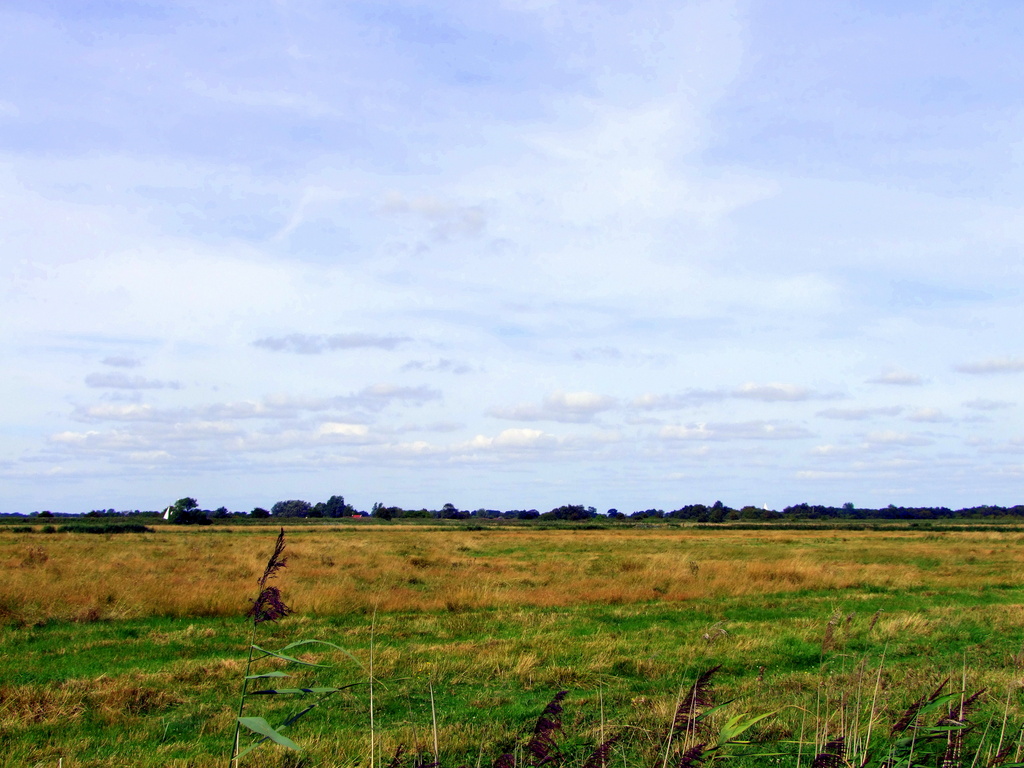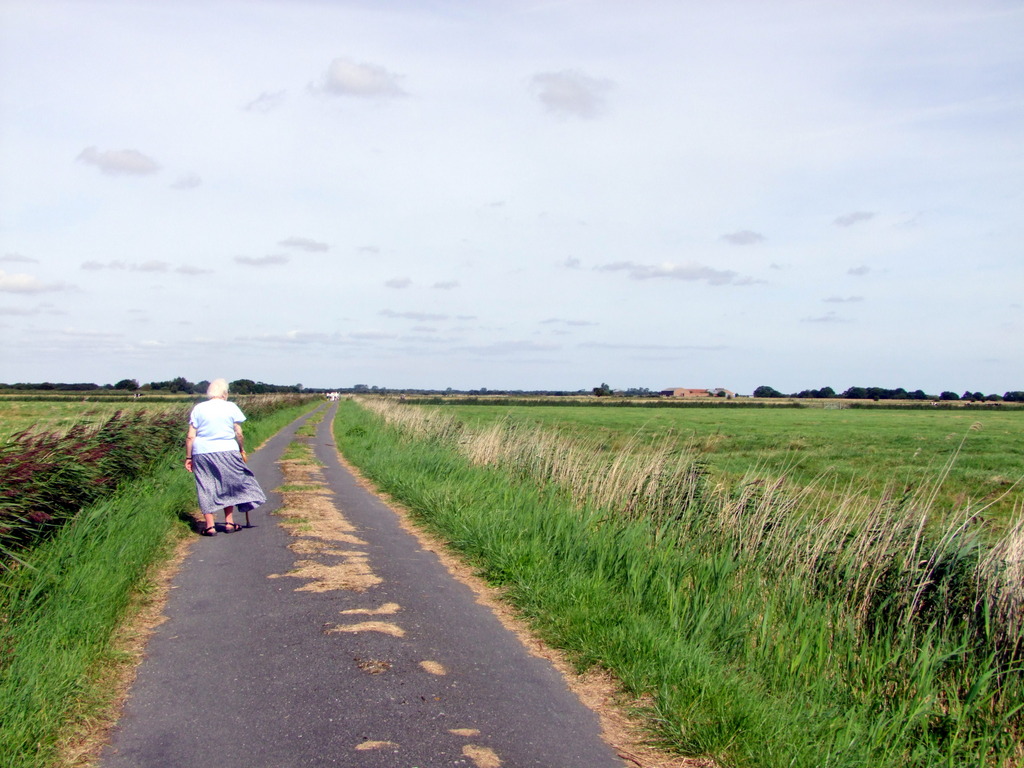Heigham Holmes Marshes near Martham

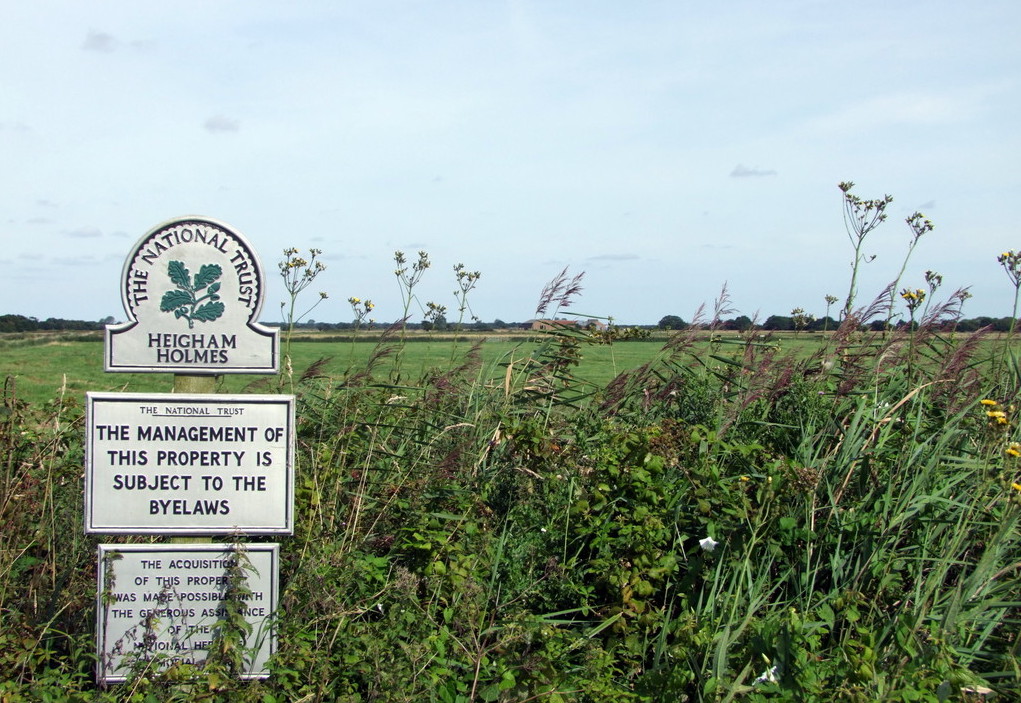
Since the end of the 2nd World War there has been speculation and conjecture about a secret airfield on Heigham Holmes. The aerial photograph shown below was taken in 1944 and appears to show the runways but………….. a contributor to the ‘Geograph website’ has carried out a forensic analysis of the topic and you can see his opinion by clicking HERE. Alternatively go to http://www.geograph.org.uk/article/Heigham-Holmes/1 for more information. I acknowledge the help of the same source for much of the following information.
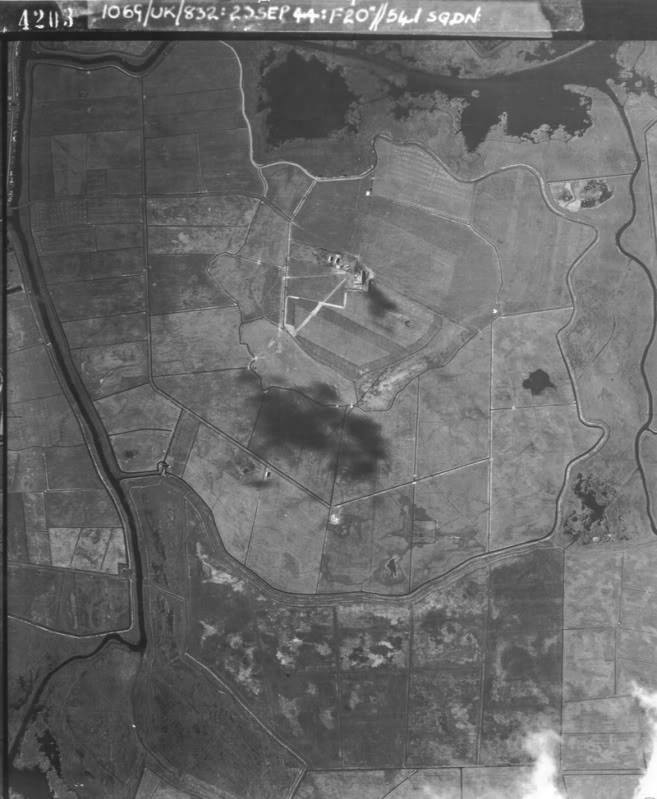
Heigham Holmes is an area of low-lying grazing marsh now owned by the National Trust and only accessible by a pontoon ferry at the north end of Ferrygate, Martham. It is, however, closed to the public apart from a couple of days a year when ‘open days’ are held. Visitors are only allowed on foot. It covers an area of 500 acres bounded by the river Thurne. The word ‘holmes’ is derived from the Old Norse word holmir for ‘island’, which Heigham most certainly is.
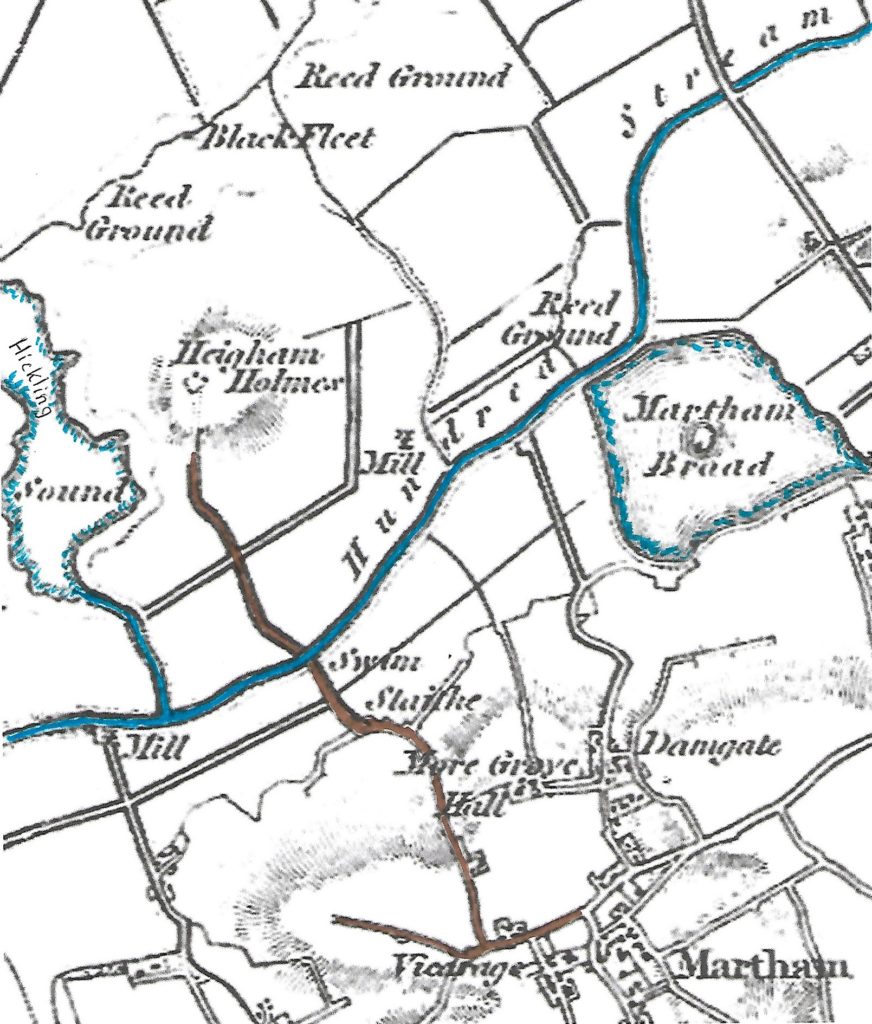
Heigham Holmes is a Site of Special Scientific Interest, which includes neighbouring Hickling Broad and Horsey Mere which together are considered to be a unique and an internationally important wetland.
Faden’s map of 1797 shows a square which could be an enclosure but no sign of any buildings in the centre of the island. By the time the 1806 Enclosure map for Potter Heigham a house had been built in the same position. The exact date this was built is not known but the house would appear to have been occupied in 1792, as it is mentioned in a memorandum appended to a legal agreement in which Robert Cory (the lessee) refunded his landlord William Savory for the kitchen fitments and utilities: “Rec’d of Mr Cory three guineas for a bath stove in the parlour, range hakes crane & oven in the kitchen of the Holmes House, By me” – dated 6 October 1792 and signed by William Savory with a ‘X’.
The buildings are again mentioned in a document dated 2nd October 1794, announcing the sale of the Holmes Estate: “To be now sold by Auction all those lands, marshes and pastures called Heigham Holmes and also all those lands and Pastures called Spurnings and being in or near Potter Heigham held by lease of the Lord Bishop of Norwich at the annual rent of £5 together with the messuage or dwelling house newly erected, bullock shed, yards, garden, well and appurtenances on the said Holmes.” The Spurnings, was an area of boggy common land shared by the parishioners of Potter Heigham, Ludham, Catfield and the proprietors of land on Heigham Holmes in equal measures and it extended from the south-western end of Meadow Dyke in the north all the way south along the western edge of Heigham Sound.
There was also a freehold marsh adjoining part of the Holmes near Martham Swim (the area adjacent to where Horsey Road crosses the Hundred Stream) consisting of over 100 acres and a premises held under a lease by Thomas Francis of West End Cottage, Martham (which has since become Grange Farm). For more details about Thomas Francis click HERE. The sale took place in the “Oak at Martham”. (The Royal Oak was the only licensed public house recorded in Martham in the late 1700s and the landlord in 1794 was Richard Bell. The pub closed in the late 19th century. For more details click HERE). The buyer was Engle Knights, a beer brewer from Winterton. The seller was Robert Cory of Great Yarmouth, Registrar of the Admiralty Court, one-time Mayor of Great Yarmouth and a solicitor by profession, who bought and sold property. The Cory family is documented to have held land on Heigham Holmes at least since the early 1700s, some of it was leased from John Savory and sub-leased to Thomas Francis.
Until well into the 19th century Heigham Holmes was owned by the Bishop of Norwich who was also the Lord of the Manor of Potter Heigham. The Bishop leased his land to tenant farmers, the names of which are recorded in the ‘Title Deeds, Manorial Records, Maps and other records relating to the Bishopric Estates in Potter Heigham Parish (1667 – 1853). Parts of the smaller and periodically flooded pastures adjacent to the island’s southern perimeter and immediately north of the River Thurne were owned by farmers which are well known and had long established connections with Martham. Examples are William Creasey Ewing (Executor to the Will of Diana Creasey), Robert Rising (of Horsey and Somerton but an owner of large amounts of land in Martham) and William Pollard (1750-1812 who lived at Martham and was from a large family farming dynasty).
The 1840 Potter Heigham Tithe Award map shows a cottage, barn and yard roughly in the centre of the island The island had been leased by George Edward Francis of West End Cottage, Martham (now much changed and known as The Grange). We have met the Francis family before and they are mentioned in other parts of this website which you can read HERE. George had obtained a 21-year lease of the marshes on the Holmes in 1835 and probably had the cottage built shortly after acquiring the lease.
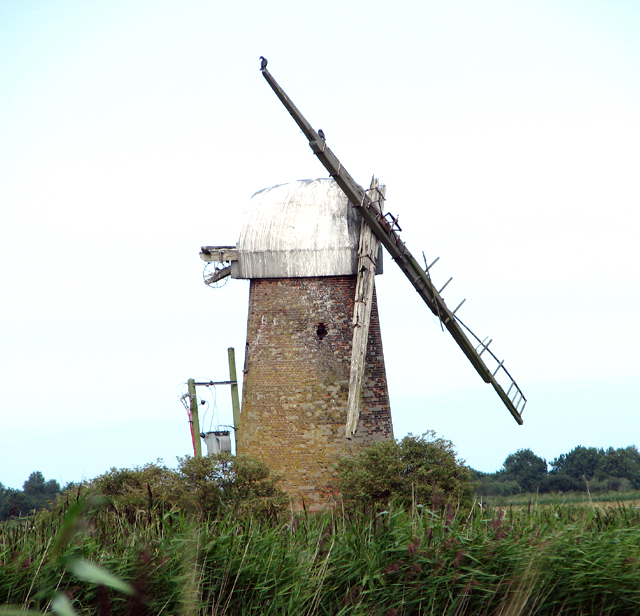
Census material is a little confusing because of vague property names but the 1841 and 1851 census returns refer to Robert Watson, his wife Ann, four children and a grandchild living at “Watson’s Marsh Mill on the Holmes” and that he was a marshman from Martham. The mill was situated beside Eelfleet Wall on the south-eastern perimeter of the island overlooking the Thurne. The mill dates from the mid-19th century and was one of the earliest wind pumps designed to raise and drain water from the marshes into the river. It was Grade II listed but is now, sadly, leaning to one side and almost derelict because of brickwork erosion and wood rot.
Robert’s name also appears in a legal document dating from 1841, by which the Bishop of Norwich agreed to lease a portion of his land to Robert Watson and George Edward Francis and it appears again in an amended agreement dated 25th March 1848. Robert died in 1856 but the mill retained the same name up to the 1871 census.
The 1851 census also refers to two different families listed as living at “Marsh Mill” in addition to Watson’s windmill by the river. One could have been in the original buildings in the centre of the island and the other at the cottage built by George Edward Francis. One family was Thomas & Mary Brown (nee Rogers) and their children. Thomas & Mary were both born at Martham, Thomas in 1811 and Mary in 1819. Together they had five children all born at Martham. The other family was John & Maria Grapes and their three children from Potter Heigham. He was also a marshman.
Thomas & Mary Brown and, by then, their six children were still there in 1861 at what is recorded as being “Marsh Farm”. In addition the Rumbold family were recorded as living at “The Holmes” which appears to be at the cottage near Candle Dyke. They were Benjamin & Lucy and their family. He was another marshman from Martham.
By 1871, the Rumbolds had moved to Acle and had been replaced by Charles & Susanna Applegate, he was a 35-year old land drain marshman. They had two children and Charles’ mother also lived there. The Browns too had left and William Smith, a 37-year old agricultural labourer lived there with his wife Elizabeth and their five children.
The 1884 O.S. map shows the earlier buildings had been extended and also shows a new dwelling to the south-west plus a timber steam engine house and a hollow post drainage wind pump on the bank of Candle Dyke. The cottage only seems to have been inhabited for a few decades and whilst it is shown on the 1907 O.S. map it had disappeared by 1938 as had the nearby wind pump. The steam engine house had become disused by 1905.
George Edward Francis died, aged only 51, in 1842 long before his 31 year lease expired (1856) but his wife must have continued to lease, and then own the holdings on the island because even after her death in 1866 her Trustees continued to manage the estate and eventually put it up for sale in 1874. The sale was handled by Messrs Spelman of Norwich. The auction advert gives us good details about the estate when the sale took place on 23rd May 1874 at the Rampant Horse Hotel. The advert said:-
“as per the instructions received from the Trustees, under the will of the late Mrs Francis, to sell the Fine Freehold Grazing Pastures known as ‘The Holmes’, situated in the Parish of Potter Heigham, with the Marshman’s Cottage, Sheds and Yard, containing 87 acres and 9 perches and the adjacent Dry Spurlands marsh, 24 acres 1 rood 26 perches” (1 acre = 4 roods, 1 rood = 40 perches). ‘The Holmes’ pastures are well known and enjoy the proverbial reputation of being some of the finest grazing land in the County.”
Also sold was a small freehold marsh which was part of ‘The Holmes’ at Heigham Sound, Rush Marsh at the northern part of Heigham Sound and an eel set in Candle Dyke. The purchaser was William Bracey (Snr) a builder and entrepreneur from Martham. You can read more about the Bracey family HERE.
The change of ownership affected families living on the island in different ways. William Smith and his family stayed for less than a decade. By 1881 William Brown had returned with his son William(Jnr), his wife Ann and their four children and lived at what had become “1 Holmes”. The Applegates and their three young children continued to live in the cottage, which had been given the postal address ‘2 Holmes’. Ten years later, in 1891, both families could still be found at 1 and 2 Holmes but by 1901 the situation had changed again. The Applegate’s had moved to Damgate, Martham and William Brown had also left.
The census of 1901 tells us that a new Brown family had moved there. They were Martin William Brown and his wife Ann and their seven children. They were living at 1 Holmes in a new dwelling which had been built onto the west end of the old house. Martin was a 42-year old agricultural labourer. In an article published in the August 1908 edition of ‘Farmers Weekly’, the historian Cecil Kellehar wrote:
“Martin looked after the cattle grazing there, kept a few of his own and also operated the wind pump for the Drainage Commission. Once a week he would row over to Martham to shop and to sell such things as butter his wife had made, mushrooms he had gathered and, from time to time, one of his animals. Ann Brown, however, is said to have lived over there for twenty years and never crossed the water.” They were still at “The Holmes” in 1911 according to the census and in 1925 according to the electoral roll of that year but by the spring of 1926 they had left and there are no further records of anyone having lived at Holmes Farm from this time onwards and the house remained uninhabited.
William Bracey Snr. had owned over 260 acres of land at The Holmes for many years but following his death the Trustees of his estate put the land, cottage and milking sheds up for sale by auction on 17th July 1937. Below is an extract of part of the sale catalogue which gives a good idea of how the land was used at the time.
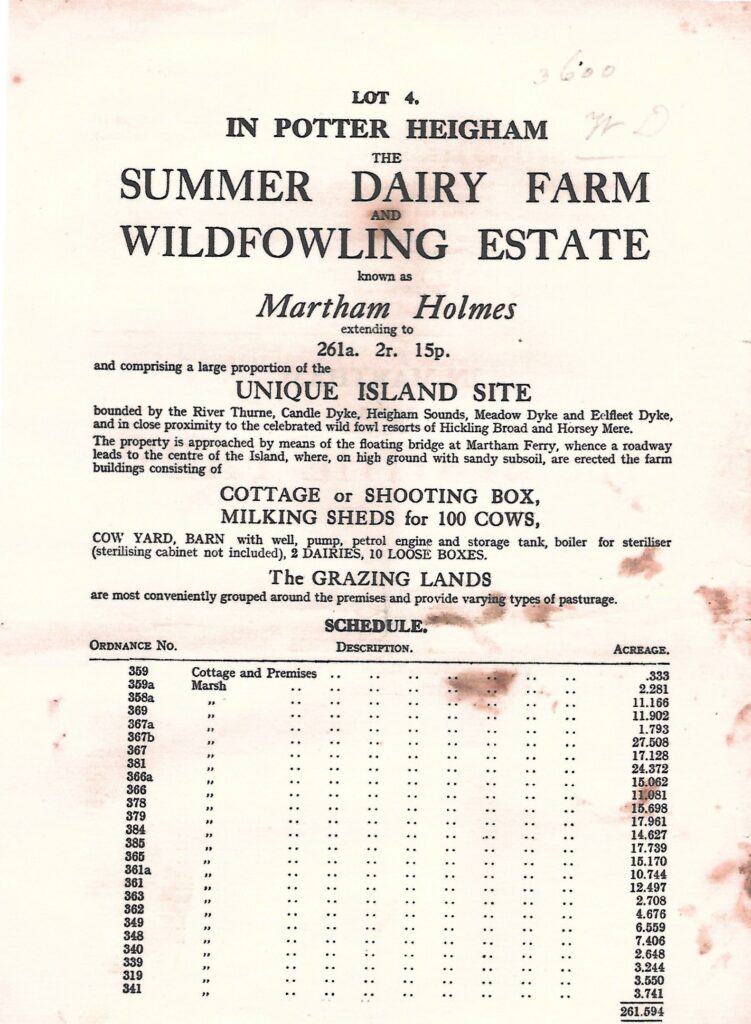
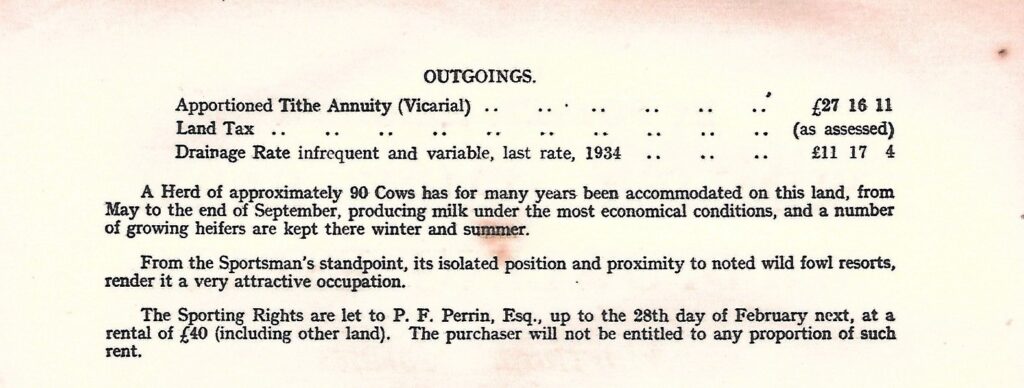
Aerial views taken in 1938 by Flight AFL3469 to record the extent of flooding after the sea defences at Horsey had been breached quite clearly show a house with two dormer windows facing south.
The house that the Browns had occupied was eventually demolished to make way for a new range of farm sheds constructed in the early 1950s. The brick walls of the adjacent older, original house remained in place and although it would be difficult to tell at a glance that the structure once used to be a dwelling, contemporary maps unequivocally place it at this location. Re-roofed and converted for agricultural use it became the bullock shed.
During the first quarter of the 20th century Heigham Holmes was farmed by George William Chapman of Clarkes Farm, Martham; George Robert Cook (farmer, Burnt Cottage, Martham); Horace John Debbage (The Green, Martham); Abadiah Oliver Dyball (Gibbet Hill, Martham); Keith, Blake & Co (Representatives of the Chantry for the Poor, Norwich); Charles William Knights (White Street, Martham); Benjamin Charles Goose (farmer and market gardener, Rectory Farmhouse, Martham); William Arthur Rigg (a baker, Black Street, Martham); Oliver Aldred Starling (engineer, Hope Cottage, The Green, Martham); Edmund Nichols (farmer, Moregrove Hall, Martham); Thomas Arthur Edmonds (farmer, Grove Farm, Black Street, Martham) and Alfred Mabbot Wiseman (Martham House, White Street); William Beales of Hemsby (near the station), Isaac William Manship (farmer, Low Road, Ormesby) and Robert Watson of Back Lane, Rollesby, the grandson of Robert Watson the marshman who had lived on the island five decades earlier. The Bracey family from Martham, famous for growing blackcurrants, had become the main landholders.
William Bracey Snr died in 1922 and the family business passed into the hands of his son William Jnr. who owned almost half the 261 acres on Heigham Holmes. The land was used for summering a herd of about 90 dairy cows from May until September and for grazing heifers which stayed on the island throughout the year. In July 1937, however, the “Martham Estate including Martham Holmes dairy farm and wild fowling estate was put up for sale by auction, held in the Royal Hotel, Norwich. The sales catalogue said: “The property is approached by means of the floating bridge at Martham Ferry and a roadway that leads to the centre of the Island, where, on high ground with sandy subsoil, are erected the farm buildings consisting of a Cottage or Shooting Box, Milking sheds for 100 cows, cow yard, barn with well, pump, petrol engine and storage tank, boiler for steriliser, two dairies and 10 loose boxes. The Grazing Lands are most conveniently grouped around the premises and provide varying types of pasture. From the Sportsman’s standpoint, its isolated position and proximity to noted wild fowl resorts (Hickling Broad and Horsey Mere) render it a very attractive occupation.” Some of the lots, including Martham House and Heigham Holmes, however failed to attract a buyer and the Braceys presence in Martham continued.
After William Bracey’s death the family’s herd of dairy cattle seems to have been disbanded whilst the range of buildings was considerably extended by the construction of large sheds including a cowshed and a dairy, designed to modern standards and adjacent to the older buildings. Shortly after their completion, the Braceys‘ holdings on Heigham Holmes were once again advertised for sale on 20th June 1953 as: “Heigham Holmes – A valuable marshland dairy holding with splendid modern dairy premises and 173 acres, approached by a well metalled tar macadam road from Martham Ferry“. The sale, by auction, was managed by Savills the Estate Agents. The auctioneers were RC Knight & Sons of Norwich. The auction catalogue is described in some detail: “The magnificent farm premises situated in the centre of the holding and include: A range of nine timber and corrugated iron loose boxes; the modern T.T. (Tuberculosis Tested) cow house for 103, of brick and corrugated asbestos roof construction with steel roof trusses; centre gangways, and concrete standings, with sterilizing room and cooling room, calf boxes; barn and bullock shed and yard. Mains electricity is connected by an underground cable passing under Lots 7 and 8. Water supply is from a deep bore by an automatic electric pump in the tower above the cooling room, to a storage tank and thence by gravity. The land lies well in a ring fence and includes about 35 acres of sound arable land, about 9 acres of carr, and the remainder sound well-drained grazing marshes, the whole extending to about 173 acres, 1 rood, 1 perch.” This time there was a buyer.
William Alston of Park Farm, Wymondham, purchased three of the lots: Martham House, Church Farm and Heigham Holmes – the latter with the intention of summering his herd of Friesian dairy cattle on the island. The cows were milked twice daily in the dairy until some time during the 1960s when this practice was discontinued and the building became redundant. Only heifers were from then on taken onto the island, and as some of the pastures were turned into arable and used for growing corn, a number of farm horses were stabled in part of the barn. Over the years, William Alston acquired all the land on the island and on his death the property passed to a relative, who today is one of the National Trust’s two tenant farmers. The farm buildings are also still standing and apart from the dairy building, which has since lost its top storey due to structural damage, they remain unchanged. Until recently some of the sheds were used for storage and others for housing cattle during the winter months. The National Trust currently maintains the complex as an historic record of past land use.
The area under conservation is now some 470 to 500 acres. Grazing is not allowed during the winter and there are other conservation restrictions. Under the present conditions grazing normally has to stop by 1st November each year. There are 37 different marshes on the island, ranging in size from 2 to 35 acres. The whole island is now all grass and has to be grazed whereas in the 1980’s two of the largest meadows were used for growing wheat.
